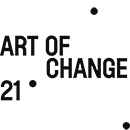Art of Change 21 – How are you feeling and coping with the Coronavirus crisis?
Lin May Saeed – I’m okay, but I think about it a lot. The feelings of powerlessness that go hand in hand with the restrictions of everyday life, which are obviously new to many, seem to contribute to radicalization. As someone who is involved in animal rights, I am familiar with feelings of powerlessness, so life under the conditions of the pandemic does not bother me much. I don’t know how the pandemic will affect me emotionally in the long term. It is still too new. But what worries me, and what I am thinking about most of the time, is that the social inequality, which is already high in Germany, will increase with Covid-19.
Regarding my work, some of my exhibitions this year took place in spite of Covid, like at the Clark Art Institute, my first comprehensive solo exhibition in a museum. Furthermore, a group exhibition at the Museum of Contemporary Art in Warsaw was only delayed a little, but it still took place.
AOC21 – Tell us more about this exhibition in Clark Art Institute, the “Arrival of the Animals”?
L.M.S. – I had been working towards this for over a year, the transport included fifteen overseas crates. The fact that these all arrived at the museum intact and were completed, shortly after the lockdown at the end of March, felt like a miracle. The exhibition was set up while the world seemed to stand still. I just received the catalogue today and I think it’s awesome! In this respect, these absurd recent months have also brought me moments of happiness.
The title of the exhibition is borrowed from a short story by Elias Canetti. He describes animals in a way that cannot be read metaphorically, he really sees them as individuals. Canetti says that throughout history there has been too little talk of animals, and I agree with him.
AOC21 – When did you first become committed to animal activism?
L.M.S. – At first I was active against fur, because in the city I studied, Düsseldorf – which is first and foremost a fashion city – it was obvious that fur became wearable and “fashionable” again at the end of the nineties. I met other active people and found out that the animal theme is so much more comprehensive than I had thought. Through activism, and conversations with activists who I was lucky enough to meet such as Melanie Bujok and Birgit Mütherich, I built up to making my current artistic work over a long period of time. I learned that the common denominator of animal oppression can be called speciesism. It was not just about becoming vegan, but about questioning an ideology of consumerism. In the context of animal rights congresses, the theory of intersectionality was addressed, which is about the interdependence of different forms of oppression, such as racism, sexism, homophobia, transphobia… The activists I know personally are political leftists. It is not only about non-human animals, but about a fairer society. I understand being a leftist is to care about equality, and especially to turn to those who are weaker instead of ignoring them. I mention this because there are right-wing movements, who pretend to be into topics like nature or animal rights, but reject social equality and a pluralistic form of society.
AOC21 – The modern animal rights movement is not new – there have already been attempts made for fairer relationships between humans and animals.
L.M.S. – Exactly! An example of this is the British suffragette movement, where there were efforts made to bring the welfare of animals to people’s attention, as one can read in Mieke Roscher’s „Ein Königreich für Tiere (engl: A Kingdom for Animals)”. But the animal rights concerns of this movement have since been written out of history in the official historiography. With the choice of the exhibition title, “Arrival of the Animals”, I wanted to express my attempt to expand my perspective, which has been a priori of the anthropocentric.
AOC21 – You use different materials, such as Styrofoam…
L.M.S. – Styrofoam is imperishable, and in a perfect world there would be no Styrofoam. I find it a challenge to take a material that is unruly and make something more beautiful out of it. Since I prime and paint the Styrofoam reliefs and sculptures, they resemble more cellular concrete. I often combine Styrofoam with plaster and found materials. I use steel for the doors and gates and paper for silhouettes. Drawings are the starting point of each work. In the case of the doors and gates, this is probably most obvious. For outdoor projects, I work together with a foundry I trust, which converts sculptural works of mine into bronze. My most important material, however, is the time I spend with the works.
AOC21 – What’s your next exhibitions going to be?
L.M.S. – Currently I prepare a contribution for Winterfest at Aspen Art Museum, Colorado, a project from and with Veit-Laurent Kurz and other artists. A commission for the group show “La mer imaginaire / The imaginary sea”, At Fondation Carmignac, Porquerolles. A solo exhibition at Jacky Strenz Gallery, Frankfurt. And Espressioni, another group show at Museo Castello di Rivoli, Torino.
Credit: Lin May Saeed, courtesy of the artist
More information about Lin May Saeed, here
Conversation led by Alice Audouin, October 2020
Find all the articles in Impact Art News n°23– October 2020
Subrcribe to Impact Art News (free) here

